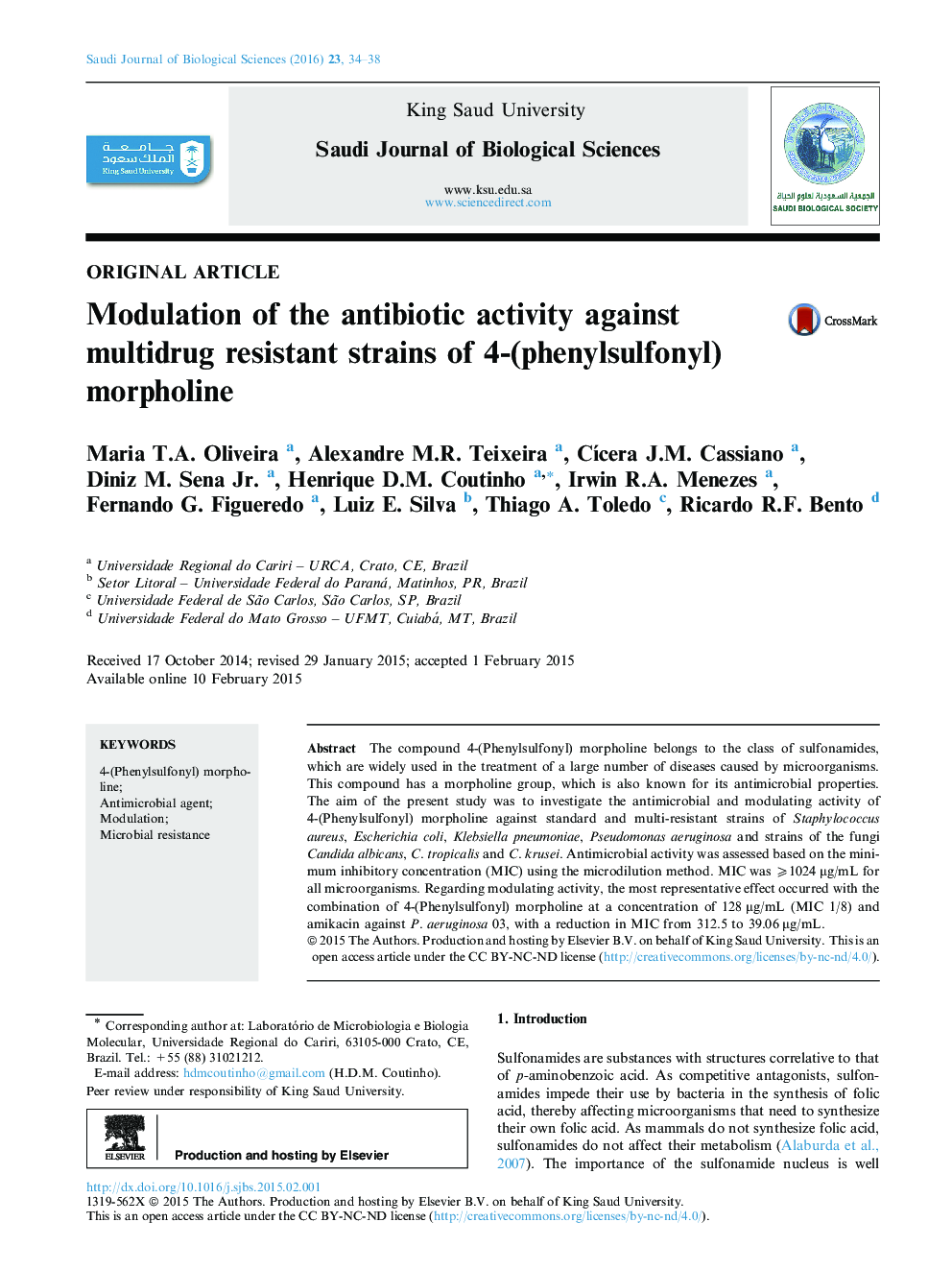| Article ID | Journal | Published Year | Pages | File Type |
|---|---|---|---|---|
| 4406224 | Saudi Journal of Biological Sciences | 2016 | 5 Pages |
Abstract
The compound 4-(Phenylsulfonyl) morpholine belongs to the class of sulfonamides, which are widely used in the treatment of a large number of diseases caused by microorganisms. This compound has a morpholine group, which is also known for its antimicrobial properties. The aim of the present study was to investigate the antimicrobial and modulating activity of 4-(Phenylsulfonyl) morpholine against standard and multi-resistant strains of Staphylococcus aureus, Escherichia coli, Klebsiella pneumoniae, Pseudomonas aeruginosa and strains of the fungi Candida albicans, C. tropicalis and C. krusei. Antimicrobial activity was assessed based on the minimum inhibitory concentration (MIC) using the microdilution method. MIC was ⩾1024 μg/mL for all microorganisms. Regarding modulating activity, the most representative effect occurred with the combination of 4-(Phenylsulfonyl) morpholine at a concentration of 128 μg/mL (MIC 1/8) and amikacin against P. aeruginosa 03, with a reduction in MIC from 312.5 to 39.06 μg/mL.
Related Topics
Life Sciences
Environmental Science
Ecology
Authors
Maria T.A. Oliveira, Alexandre M.R. Teixeira, CÃcera J.M. Cassiano, Diniz M. Jr., Henrique D.M. Coutinho, Irwin R.A. Menezes, Fernando G. Figueredo, Luiz E. Silva, Thiago A. Toledo, Ricardo R.F. Bento,
